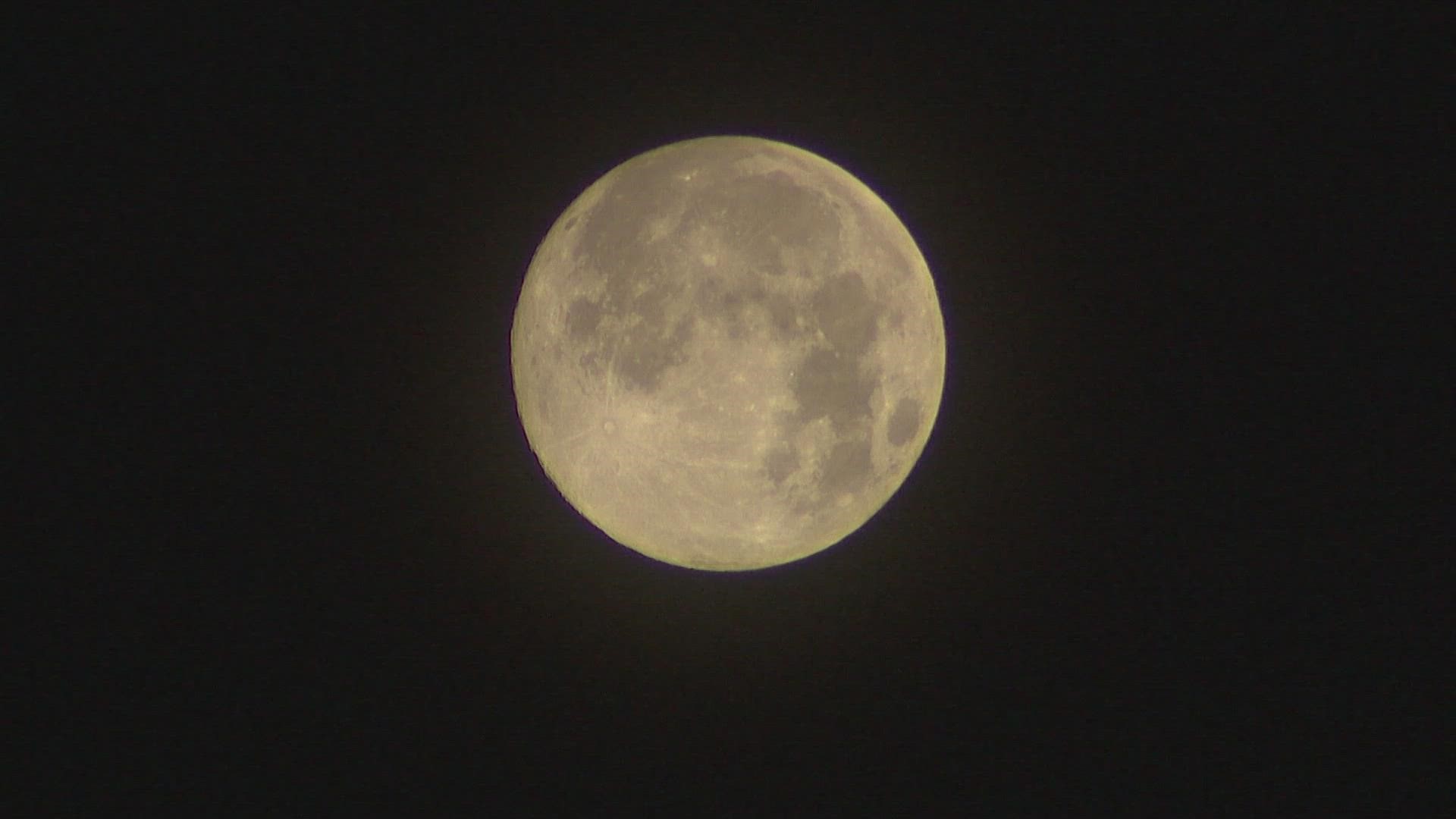SEATTLE — 2023's first full moon will light up the evening sky on Jan. 6 with peak illumination at 3:08 p.m. PT, but the moon could appear smaller than what you're normally used to observing.
This is because the full moon this month is a micromoon or the opposite of a supermoon.
The reason the moon will appear smaller is because we're nearing the point in which the moon's orbit is farthest away from Earth. Like Earth, the orbit of the moon is an ellipse, not a perfect circle, so there are points in which the moon's orbit is farther and closer to Earth.
When the moon is farthest from the Earth, this is known as apogee. Whereas when the moon is closest to Earth, it's known as perigee. When the moon is nearing perigee, typically, full moons appear larger and brighter, which is a supermoon.
Friday evening, the moon will be nearing the point that is farthest away from Earth, which can make the moon appear to be nearly 14% smaller than a supermoon, according to EarthSky.org.
The January micromoon is one of two micromoons in 2023. A second micromoon will occur in February, which will be 2023's farthest micromoon of the calendar year.
Friday evening's full moon is also often called the "Wolf Moon" because wolves were more likely to be heard howling this time of the year. According to the Farmer's Almanac, it was believed that wolves howled due to hunger during the winter. That thought has since changed over time.

